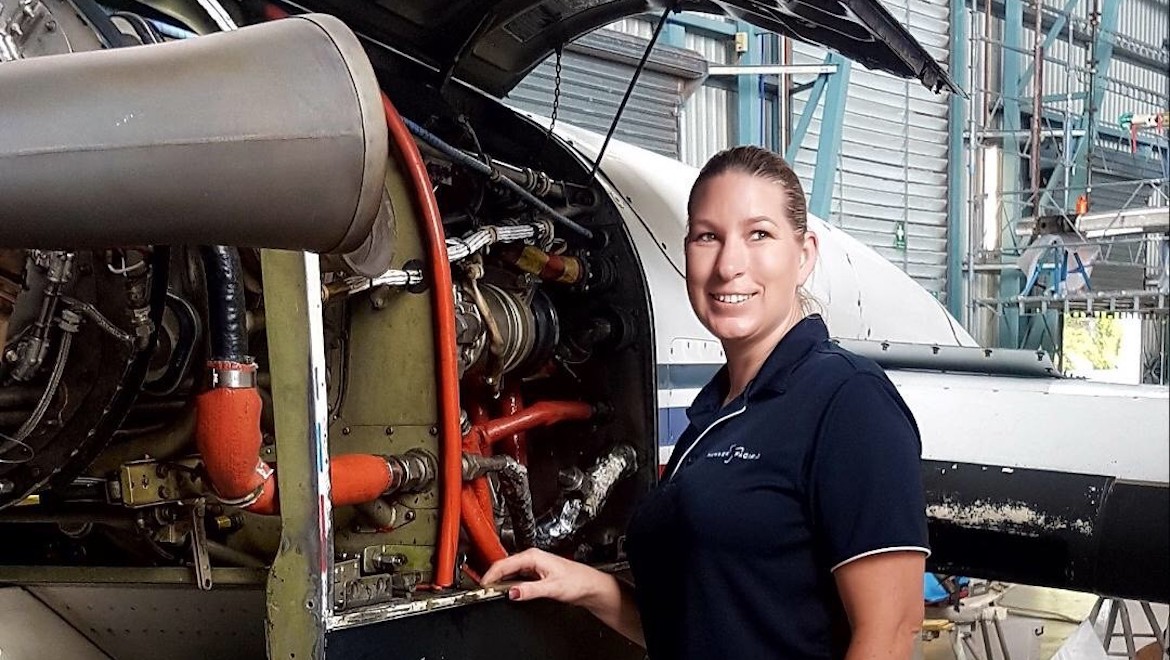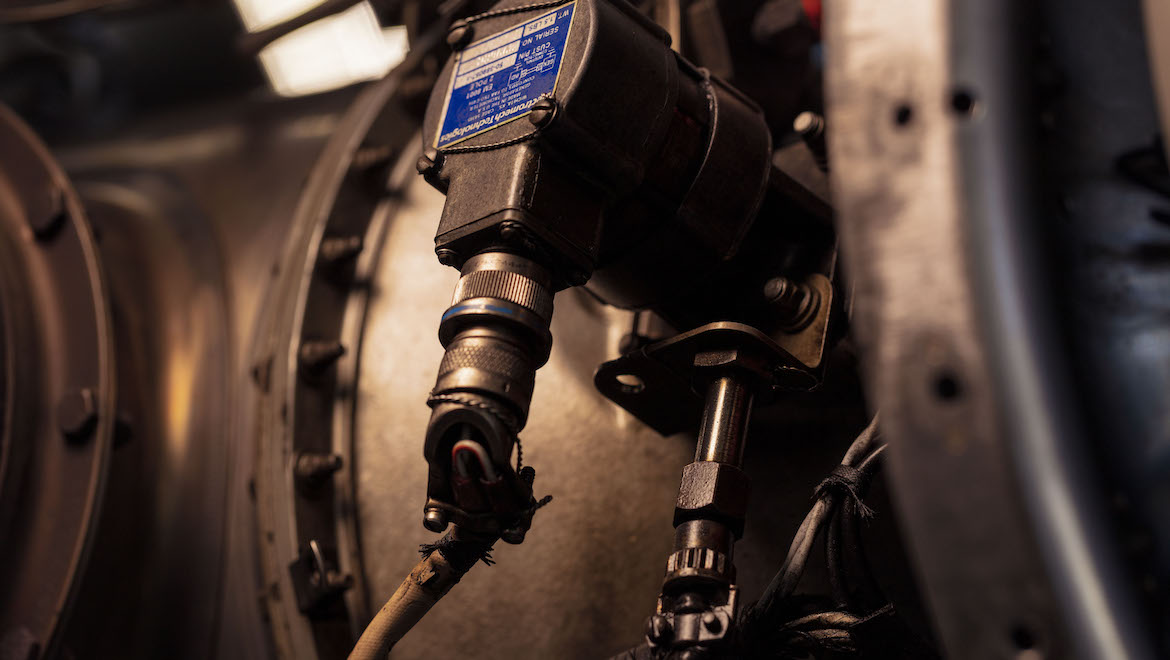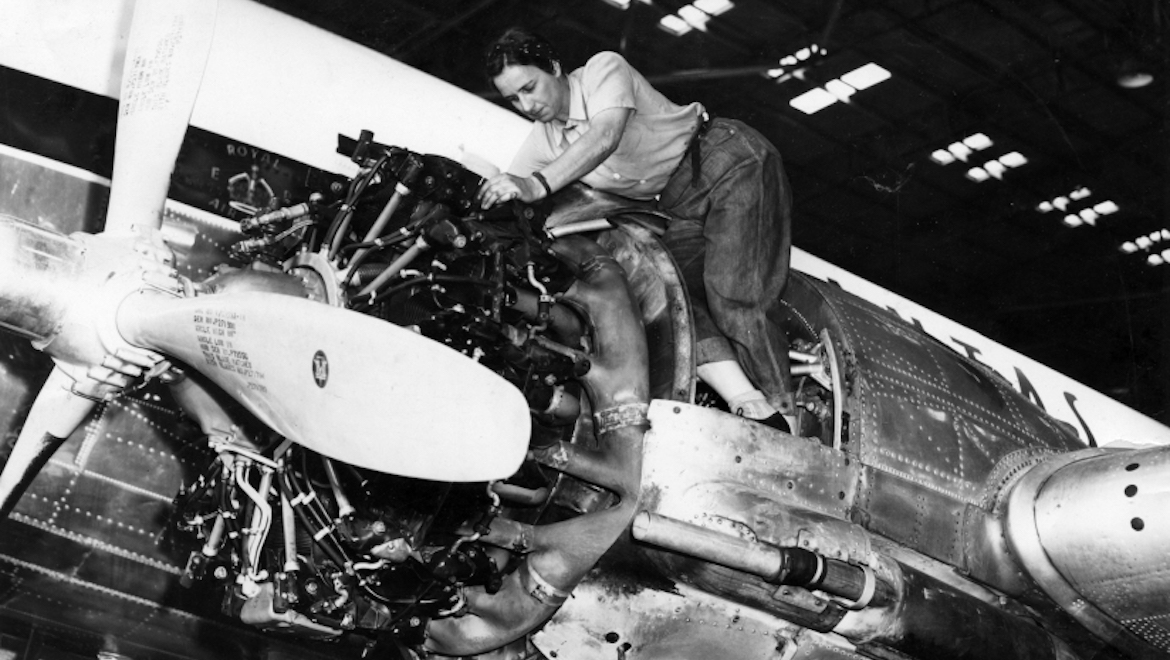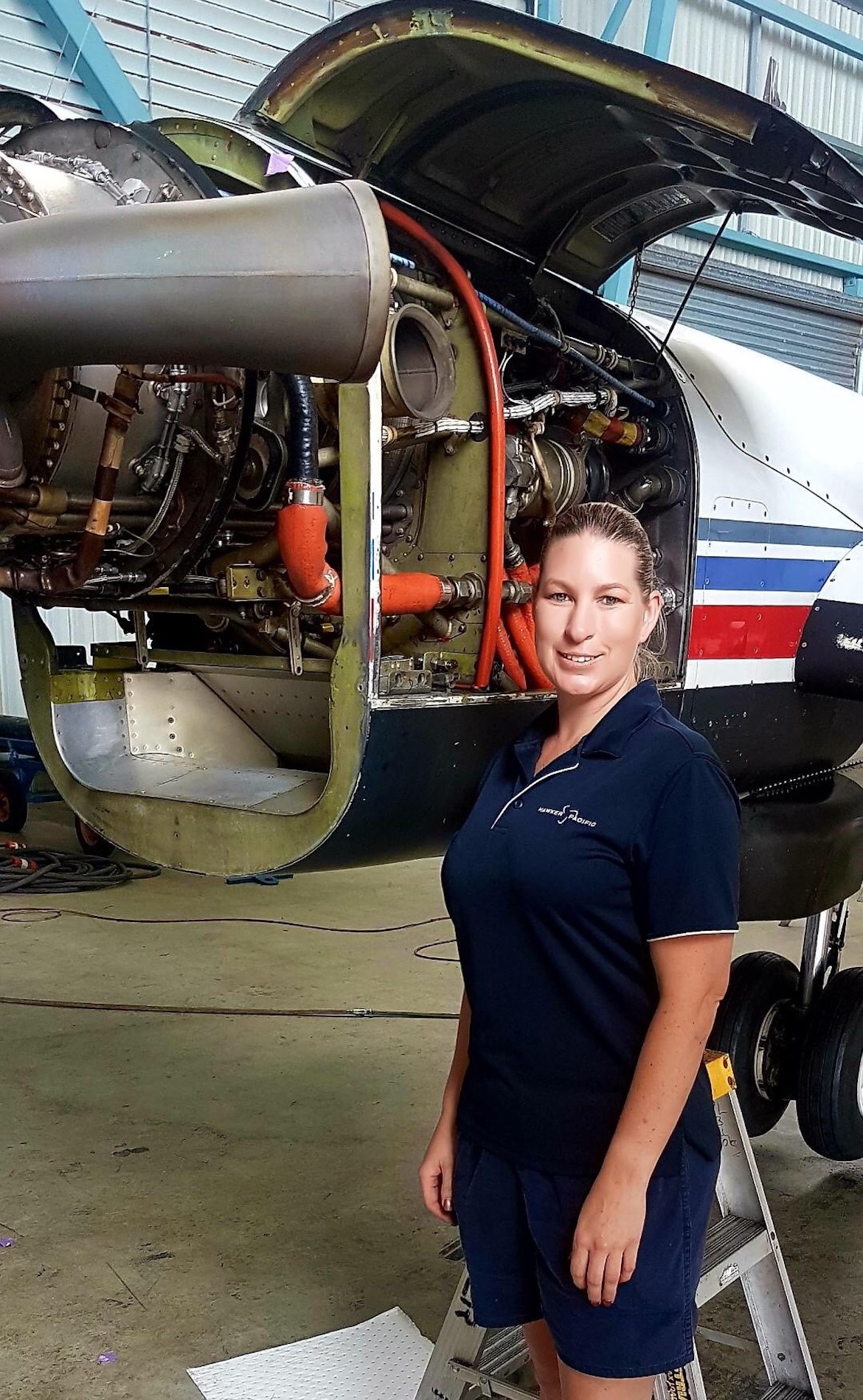This story on Aviation Australia instructor/assessor for mechanical Emma Mahoney first appeared in the May 2019 edition of Australian Aviation.

Aircraft engineers keep Australia’s fleet of more than 15,000 private and commercial aircraft flying safely.
However, by 2025, it is estimated there will be a 30 per cent global shortage of trained aircraft engineers. Australia and the Asia Pacific region will be hardest hit.
One way to tackle the conundrum is to attract more women to the male-dominated sector.
Important initiatives, such as Women in Aviation/Aerospace Australia (WA/AA), are aiming to drive up numbers and even up the gender imbalance. Airlines are also starting to introduce measures to attract more females to non-traditional roles in aviation.
As the aviation industry wrestles with solving these issues, Emma Mahoney – an aviation instructor and aircraft engineer – is playing a significant part, too.
A career in aviation takes flight
For Emma Mahoney, a career in aviation has plenty of perks – getting out of bed at 3am to start an early morning shift is not one of them. Turning to coffee to get her through, she nominates this as one of the few challenges in a job she’s loved for 17 years.
Emma’s aviation journey began when she was just a youngster in regional Victoria. Her mum was an accountant for a helicopter company. Wide-eyed Emma developed a keen interest in aviation from her visits there, captivated by the comings and goings at the hangar.
Still, when Emma finished school she didn’t have any clear career direction. What she did know was she wanted to work with her hands. As fate would have it, Emma saw an advertisement in the paper for a pre-vocational course in aviation maintenance.
“Enrolling in the course was the best decision I ever made,” she says.
“When I completed my Certificate IV course with Aviation Australia in 2003, I secured an apprenticeship with Alliance Airlines. After completing my apprenticeship, I spent a few years working as a contractor for QantasLink, Jetstar and other general aviation operators. Here, I gained an excellent range of experience on many different types of aircraft.”

Ups and downs of engineering
In Emma’s experience, woman make excellent aircraft engineers. She’s found the skills of patience, communication and problem-solving come naturally, which are key components of the job. Despite this, her gender did prove to be a barrier initially.
“Early on, I found it difficult to find a company that would take me on as an apprentice. It took time for my male colleagues to get used to working with me,” says Emma. “In time, I feel they have all seen I bring a different skill-set that can enhance any maintenance team.”
In 2009, Emma accepted a permanent position at Hawker Pacific, where she worked on projects with the Royal Flying Doctor Service (RFDS), including both line and heavy maintenance, medical installation and medication programs, even travelling to remote locations to retrieve unserviceable aircraft. Every day was an adventure.
“One of my most memorable moments was the day my first LAME [Licenced Aircraft Maintenance Engineer] arrived in the mail. The first aircraft I ever released to service as a LAME was an RFDS King Air,” explains Emma.
“It had an air return. I was terrified I had made a mistake during the servicing. Luckily, it was a completely unrelated issue. I will never forget that moment of sheer panic!”
As a LAME, Emma carried out servicing and maintenance work, and supervised the work of other engineers in the team, which included signing off on work and certifying that jobs had been completed to the required standard – and aircraft were ready to fly.
Through her time working with the RFDS aircraft, she spent a lot of time with apprentices on the hangar floor. One of them suggested she’d be good as a trainer because of how well explained things to him. It was a career-changing conversation.
A smooth career transition
In 2017, Emma took on a part-time position with Aviation Australia, teaching the Certificate II program. This year, she is working full-time as an aviation instructor and assessor.
“Working as an instructor and assessor means no two days are the same. I could be either travelling to the Norther Territory to teach a Certificate II class, meeting with apprentices to assess their progress or, I could be visiting trade and career expos to speak to students at schools about different career opportunities in aviation,” says Emma.
Emma follows in the footsteps of aviation pioneers such as Connie Jordan, who was Qantas’s first female licensed ground engineer in 1942. It is understood the men at the base at Archerfield, Brisbane went on strike because they didn’t want a woman as their boss.
Emma believes the attitudes of the past are changing; perhaps not fast enough.
Most aviation organisations are now embracing women on the hangar floor. However, there is still a gender bias in aircraft engineering – of the 10,900 aircraft maintenance engineering workforce in Australia, only 1.9 per cent are women.

A path less travelled
While Emma acknowledges women are under-represented in aviation, she is an advocate for encouraging everyone to learn more about aircraft engineering as a career. The bottom line is, aviation is not well-known as a career path.
“We have quite low enrolments for women – probably one or two per class,” she says. “A lot of the girls I talk to at career days, or in everyday life, say they don’t even realise engineering is a career path open to them. The girls who enroll are strong-minded and smart.”
Emma just wants to see more of them join the industry.
“I want to show women this is a career that is achievable for them. There are still lots of stereotypes about the kind of women who go into this kind of work,” she says. “You can still enjoy being a woman, being feminine, and have a fabulous career in aviation engineering.”
Cairns-based Emma has this practical advice for all would-be aviators.
“Get out there and visit a local hangar and ask for some work experience,” she says. “This will give you a real insight into what being an engineer is really like.
“At Aviation Australia, we provide high-quality aviation training from Certificate II in Aircraft Line Maintenance right through to the Diploma level and aircraft-specific training. High school students can enrol in a Certificate II program to prepare for an aviation career after school.”

Wide-eyed about aviation
While the electrical theory was tough for Emma to get her head around during training, she has applied the same determination to mastering all aspects of her career in aviation, from baggage handling and customer service to the technical stuff.
“I have spent my career working on so many different aircraft – large commercial aircraft to small-single engine Cessna aircraft,” says Emma. “Most recently, I have been working on King Air 300 and C208 aircraft. The King Air has become my favourite aircraft to work on.”
All these years later, and Emma is still wide-eyed about aviation.
“Every day is different, you can be working in a hangar one minute then on your way to a remote location to retrieve an unserviceable aircraft the next,” she says. “I get to work with people who are all different and have made many great friends in this industry.”
For now, though, the focus is on teaching and upskilling into management. There is never a destination in aviation – it is a career that presents a never-ending learning curve.
“I have been able to surprise myself at times, completing a task I never thought I could do. You also get a great sense of satisfaction when you complete an aircraft service on time and the aircraft leaves the hangar looking fantastic and working beautifully,” she says.
Emma Mahoney career snapshot
- Apprenticeship with Alliance Airlines
- Contract roles with aviation operators
- Worked with Hawker Pacific on RFDS Qld aircraft
- Work experience / part-time teacher with Aviation Australia
- Full-time aviation engineering teacher with Aviation Australia
This story on first appeared in the May 2019 edition of Australian Aviation. To read more stories like this, become a member here.












